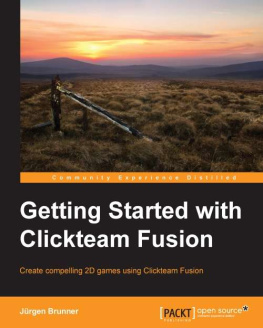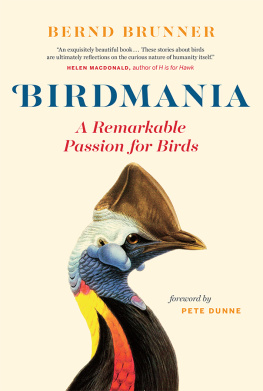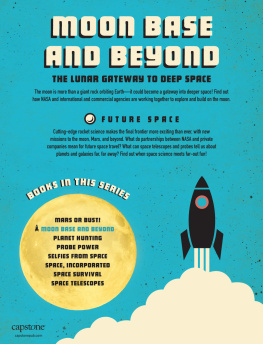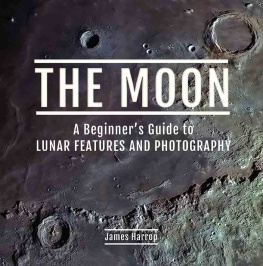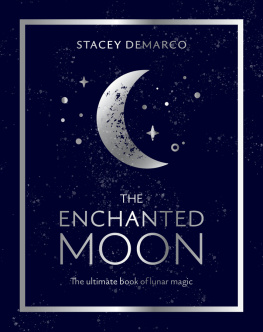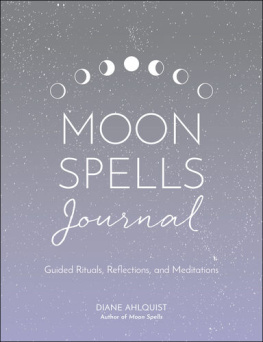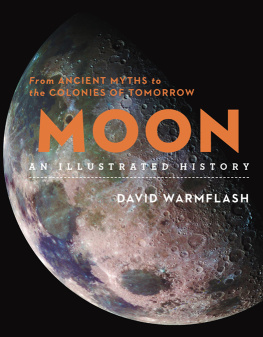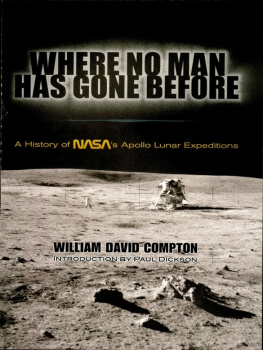Brunner - Moon: a brief history
Here you can read online Brunner - Moon: a brief history full text of the book (entire story) in english for free. Download pdf and epub, get meaning, cover and reviews about this ebook. City: New Haven, year: 2010;2009, publisher: Yale University Press, genre: Science fiction. Description of the work, (preface) as well as reviews are available. Best literature library LitArk.com created for fans of good reading and offers a wide selection of genres:
Romance novel
Science fiction
Adventure
Detective
Science
History
Home and family
Prose
Art
Politics
Computer
Non-fiction
Religion
Business
Children
Humor
Choose a favorite category and find really read worthwhile books. Enjoy immersion in the world of imagination, feel the emotions of the characters or learn something new for yourself, make an fascinating discovery.

- Book:Moon: a brief history
- Author:
- Publisher:Yale University Press
- Genre:
- Year:2010;2009
- City:New Haven
- Rating:4 / 5
- Favourites:Add to favourites
- Your mark:
- 80
- 1
- 2
- 3
- 4
- 5
Moon: a brief history: summary, description and annotation
We offer to read an annotation, description, summary or preface (depends on what the author of the book "Moon: a brief history" wrote himself). If you haven't found the necessary information about the book — write in the comments, we will try to find it.
Moon: a brief history — read online for free the complete book (whole text) full work
Below is the text of the book, divided by pages. System saving the place of the last page read, allows you to conveniently read the book "Moon: a brief history" online for free, without having to search again every time where you left off. Put a bookmark, and you can go to the page where you finished reading at any time.
Font size:
Interval:
Bookmark:
I would like to thank above all my editor Jean E. Thomson Black for her continuing enthusiasm and support, Dan Heaton for his intensive and thoughtful work on the final manuscript, Sonia Shannon for designing this book, Jaya Chatterjee for helping me with the organization of the illustrations, and the staff of Yale University Press in the New Haven and London offices. Particular thanks are due to David Luljak for his index. Many thanks also to my parents, Helgard and Siegfried Brunner, and to the following friends and associates: Rathnayake M. Abeyrathne (University of Peradeniya, Kandy, Sri Lanka), Ines Cabral, Alexandre Cabrita, Jos Joo Dias Carvalho, Francesco Paolo de Ceglia (University of Bari Aldo Moro, Italy), Dan Delany, Detlef Feussner, Jacinto Jos Gomes, Joseph P. Grubb, Michael Hely, Klaas Jarchow, Brendan Kenney, Lori Lantz, Ulrich Meyer, Olaf Oberschmidt, Scott W. Perkins, Eva Schoening, Julien Sialelli, Benjamin A. Smith, Keijiro Suga (Meiji University, Tokyo, Japan), and a very dear friend who prefers to remain unnamed here.
My gratitude also extends to the many often unknown artists whose fine illustrations are featured in this book andfor a range of reasonsto Margaret Adamic (Disney Publishing Worldwide, Inc.), Paul Brown (National Park Service), Jules Cashford, Nina Cummings (The Field Museum, Chicago), Volker Dehs, Ian Garrick-Bethell (MIT), Pietro Greco, Jeannine Green (Bruce Peel Special Collections Library, University of Alberta), Daniel Grinsted, Ove Hoegh-Guldberg (Global Change Institute, University of Queensland), Eric van den Ing, Edwin C. Krupp (Griffiths Observatory, Los Angeles), Jacques Laskar (Observatoire de Paris), Benjamin Lazier (Reed College, Portland), Vera Martinez (Technical University Darmstadt), Nancy OShea (The Field Museum, Chicago), Jeff Papineau (Bruce Peel Special Collections Library, University of Alberta), Bernd A. Pflumm, Marco Scola, Paul D. Spudis (Lunar and Planetary Institute, Houston), Stuart Ross Taylor (Australian National University, Canberra), Ana Tipa, Joe Tucciarone, Mark Wieczorek (Institut de Physique du Globe de Paris), the librarians of the Berlin State Library, the New York Public Library, and the National Library of Portugal in Lisbon, as well as several sellers of antique books, especially Christoph Janik. I would also like to thank the readers who evaluated the manuscript and gave constructive criticism.
A number of books have been influential in my writing; the most important of these are included in the bibliographic essay.
Any problems that remain are, of course, my own responsibility.
If you want to drop me a line, please do so by E-mail: .
Titles are mentioned on a selective basis, with focus on references in the English language.
For further ideas about life on Earth without the moon see Neil F. Comins, What if the Moon Didnt Exist? Voyages to Earths That Might Have Been (New York: HarperCollins, 1993). The Rare-Earth Hypothesis, positing that the development of life on Earth is the result of improbable circumstances, is also interesting in this context; see Peter Ward and Donald Brownlee, Rare Earth: Why Complex Life Is Uncommon in the Universe (Berlin: Springer, 2000).
For a collection on issues related to night in the contemporary world see Paul Bogard, ed., Let There Be Night: Testimony on Behalf of the Dark (Reno: University of Nevada Press, 2008).
The International Dark-Sky Association tries to raise awareness of light pollution. See www.darksky.org.
A very good resource for many issues concerning the observation of the moon is Patrick Moore, Patrick Moore on the Moon (London: Cassell, 2001).
For a more detailed discussion of the question of multiple moons circling Earth see Michael E. Bakich, The Cambridge Planetary Handbook (Cambridge: Cambridge University Press, 2000), 145 ff.
The reference for the Shona is taken from William M. Clements, ed., The Greenwood Encyclopedia of World Folklore and Folklife (Westport, Conn.: Greenwood, 2005).
For a comprehensive treatment of solar eclipses see J. P. McEvoy, Eclipse: The Science and History of Earths Most Spectacular Phenomenon (London: Fourth Estate, 1999).
The description of the solar eclipse in India is taken from www.krysstal.com/eclipses.html. At the time of writing this Web site also displayed many photos from various solar eclipses.
Camille Flammarions quotations are taken from Popular Astronomy: A General Description of the Heavens (London: Chatto and Windus, 1894). Flammarion is also the source of my quotation of Franois Arago.
For a general discussion of life outside the Earth in historical perspective see Michael J. Crowe, The Extraterrestrial Life Debate, 17501900: The Idea of a Plurality of Worlds from Kant to Lowell (Cambridge: Cambridge University Press, 1986).
Richard Holmes, The Age of Wonder: How the Romantic Generation Discovered the Beauty and Terror of Science (London: Harper, 2008), has a chapter with biographical information on Sir William Herschel, who started out as an organist in Hannover, Germany, and later became an astronomer who built several hundred telescopes.
Valdemar Axel Firsoff, Strange World of the Moon: An Inquiry into Its Physical Features and the Possibility of Life (New York: Basic, 1960), is the most recent book I found in my research that still evaluated the possibility of life on the moon. The perspective of Firsoff, an amateur astronomer, was marginal.
The role of the moon, the sun, and stars in ancient cultures fills volumes. A comprehensive overview of the historical relationship of humans toward the cosmos can be found in:
John North, Cosmos: An Illustrated History of Astronomy and Cosmology (Chicago: University of Chicago Press, 2008); Edwin C. Krupp, Beyond the Blue Horizon: Myths and Legends of the Sun, Moon, Stars, and Planets (New York: HarperCollins, 1991); and Anthony Aveni, People and the Sky: Our Ancestors and the Cosmos (London: Thames and Hudson, 2008). Avenis older book Empires of Time: Calendars, Clocks, and Cultures (New York: Basic, 1989), is also relevant for some of the issues dealt with in this chapter.
Peter Watsons massive Ideas: A History of Thought and Invention from Fire to Freud (London: Weidenfeld and Nicolson, 2005) deals with some of the aspects of this chapter in the broader context of a more general history of human ideas and inventions.
The examples for lunar myths of the Maoris, the Tup, and the Tartars, as well as the various mythical tropes, are taken from Jules Cashford, The Moon: Myth and Image (New York: Four Walls Eight Windows, 2003).
On the cult of the moon in Lusitania see Moiss Esprito Santo, Cinco mil anos de cultura a oeste. Etno-histria da religio popular numa regio da Estremadura (Lisbon: Assrio and Alvim, 2004).
For more scholarly information on the significance of the sun, the moon, and the stars in ancient India refer to Georg Feuerstein, Shubhash Kak, and David Frawley, In Search of the Cradle of Civilization: New Light on Ancient India (Wheaton: Quest, 2001).
The reference to Roger Bacons measurement of the distance between Earth and moon is taken from Albert van Helden, Measuring the Universe: Cosmic Dimensions from Aristarchus to Halley (Chicago: University of Chicago Press, 1985).
Martin Nilsson, Primitive Time-Reckoning: A Study in the Origins and First Development of the Art of Counting Time Among the Primitive and Early Culture Peoples (Lund: Gleerup, 1920), remains a fascinating study of early timekeeping systems.
Font size:
Interval:
Bookmark:
Similar books «Moon: a brief history»
Look at similar books to Moon: a brief history. We have selected literature similar in name and meaning in the hope of providing readers with more options to find new, interesting, not yet read works.
Discussion, reviews of the book Moon: a brief history and just readers' own opinions. Leave your comments, write what you think about the work, its meaning or the main characters. Specify what exactly you liked and what you didn't like, and why you think so.

